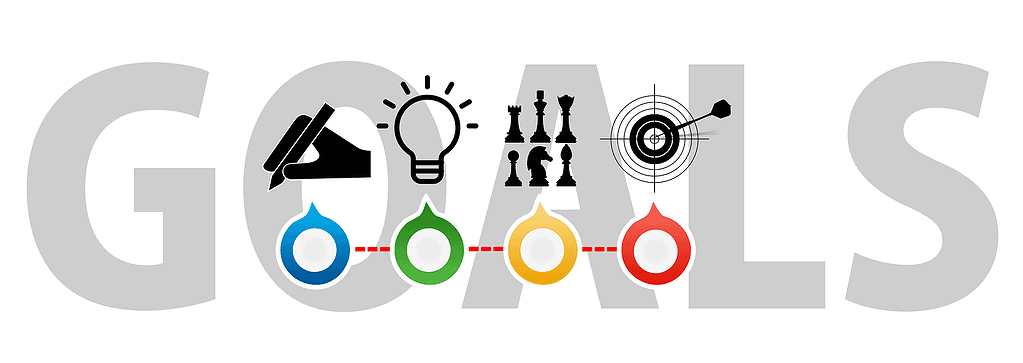11 Best Marketing Plan Goals for your Side Hustle Business Plan
Marketing Plans are very important. This is where you really promote your products or services to your customers. This plan outlines the strategies and tactics that your business will use to reach its target audience, communicate your unique value proposition, and urge potential customers to take a desired action, such as making a purchase, signing up for a service, or subscribing/following you. I have found that having a weekly planner for thinking ahead about my content and where I want to post it has been really helpful.
The specific goals of a marketing plan may vary depending on your objectives and target audience. Interestingly, In CoSchedules 2022 Trend report on Marketing Strategy that organized marketers ae 676% times more likely to achieve success. Also, as was discussed in a prior post on ambitious goal setting, there is a difference between basic goals and transformational goals. Transformational goals can really accelerate your growth and results and drive a different set of solutions to achieve them. The core goals for a marketing plan are defined below.

5 SMART Marketing Plan Goals for Your Side Hustle
Increasing brand awareness: A key goal of this plan is to increase your brand’s visibility and recognition among your target audience. This can be measured by tracking metrics such as website traffic, social media engagement, and brand mentions.
- For example, your goal may be: a 20% increase in your social media followers over the next quarter or to generate 100 new leads per week through your website.
Generating leads and sales: Another important goal of a marketing plan is to attract potential customers and convert them into paying customers. You can measure this goal by tracking metrics such as conversion rate, cost per acquisition, and revenue.
- For example, your goal may be: to increase your website’s conversion rate by 10% by optimizing your landing pages or to generate $10,000 in new revenue through a targeted email campaign.
Building customer loyalty: A marketing plan can also focus on cultivating long-term relationships with your customers. You can measure this goal by tracking metrics such as customer lifetime value, repeat purchase rate, and customer satisfaction.
- For example, your goal may be: a 15% increase in your customer retention rate by implementing a customer loyalty program or to improve your customer satisfaction score by 20% through better communication and support.
Establishing thought leadership: Your plan can also be a part of positioning you as a brand leader in your industry, which can help build trust and credibility with your target audience. You can measure this goal by tracking metrics such as website authority, industry recognition, and content engagement.
- For example, your goal could be: to publish 10 thought leadership articles in industry publications over the next year or to secure speaking engagements at 3 major conferences in your industry.
Increasing customer engagement: Finally, a marketing plan can focus on increasing engagement with your target audience through various marketing channels and tactics. You can measure this goal by tracking metrics such as social media engagement, email open and click-through rates, and content shares.
- For example, your goal may be: to increase your email open rate by 5% by optimizing your subject lines or to generate 500 new social media followers through a targeted advertising campaign.
Overall, by setting clear and measurable goals for your marketing plan, you can track your progress, adjust your tactics, and achieve the results that matter most for your business.
6 Key Metrics to Measure Results of your Marketing Plan for your Side Hustle Business
When it comes to measuring the success of a marketing plan for a Side Hustle, there are several key metrics that you should consider:
Sales: This is the big one…whether it’s all working. Measuring sales is essential for determining the effectiveness of your marketing efforts in driving revenue.
- For example, if you sell handmade jewelry, you can track the number of units sold and revenue generated from your marketing campaigns, such as email promotions or social media advertising.
Conversion rate: Tracking your conversion rate will help you determine how effective your marketing messages are in motivating people to take action.
- For example, if you’re promoting a software product, you can track the percentage of people who sign up for a free trial or purchase a subscription after visiting your website from a social media ad or email.
Website traffic: Tracking website traffic is important for understanding whether your marketing messages are reaching your target audience and driving traffic to your website.
- For example, if you offer a cooking blog, you can track the number of unique visitors to your website from social media or email marketing campaigns.
Social media engagement: Measuring social media engagement is critical for determining the level of interaction with your content and whether your content resonates with your target audience.
- For example, if you’re a freelance photographer, you can track the number of likes, comments, and shares on your Instagram posts to gauge the level of engagement and whether your content is attracting potential clients.
Cost per acquisition (CPA): Tracking your CPA will help you determine how much it costs to acquire a new customer through your marketing efforts.
- For example, if you run a small catering business, you can track the cost of acquiring a new customer through your Facebook ads or Google AdWords campaigns.
Customer lifetime value (CLV): Measuring CLV will help you determine how much value each customer brings to your business and how much you can afford to spend on marketing to acquire new customers.
- For example, if you’re a freelance graphic designer, you can calculate the average amount a client spends with you over the course of a year and use this data to determine how much you can afford to spend on marketing efforts to acquire new clients.
By tracking key metrics, you can gain valuable insights into the effectiveness of your marketing plan and you can make data-driven decisions to optimize your marketing efforts for your Side Hustle or business. This is key to be able to understand what is working and where you may need to take additional actions. As the saying goes, “What Get’s Measured Gets Done” by Peter Drucker.





